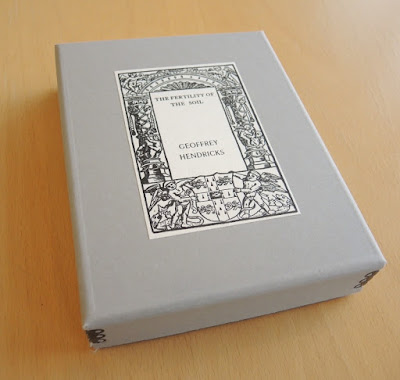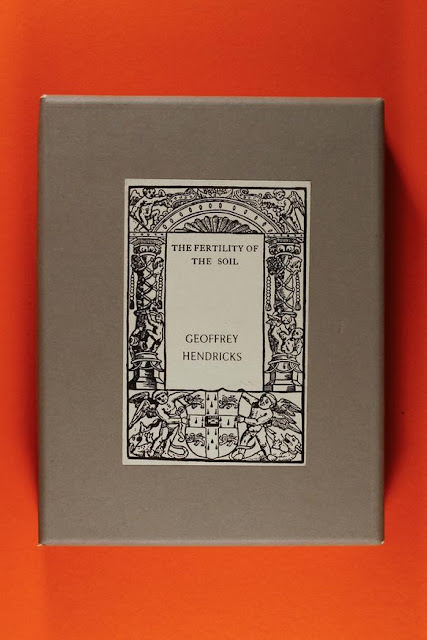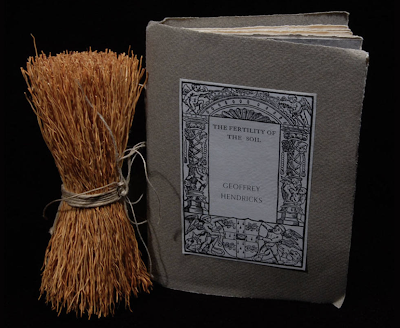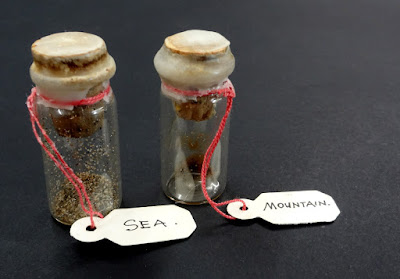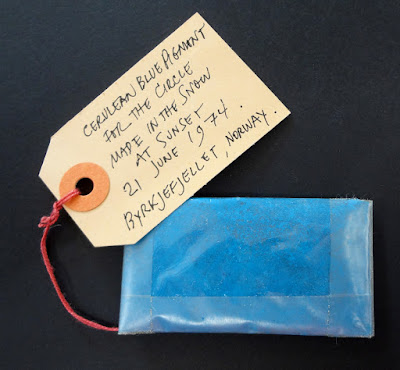Geoffrey Hendricks
Ring Piece
New York City/Barton, USA: Something Else Press, 1973
79 pp., 13.5 x 10.5 cm., softcover
Edition of 2000
Subtitled "The Journal of a Twelve Hour Silent Meditation", this slim volume documents the artist's performance at the 8th Annual Avant Garde Festival. Organized by Charlotte Moorman, the event took place on November 19, 1971, at the 69th Regiment Infantry Armory, in Manhattan. Other participants included Christo, Joe Jones, John Lennon, Hermann Nitsch, Yoko Ono, Ralph Oritz, Joey Skaggs, Bob Watts, and many others.
Hendricks sat in a tuxedo in silence for twelve hours, atop a six-foot tall mound of dirt, in the exact centre of the Armory, under which was buried his wedding ring, and various other relics relating to his marriage.
One of the smallest titles put out by the press, the book is designed to be the exact size of the little red journal that Hendricks kept during the 12 hour long meditation. "Good words from the Cloudsmith" is how it is described in the Something Else Press newsletter from January 1973. The title sold for $5.45, and a cloth signed and numbered edition (of 100) was offered for $15.00.
"For the Avant Garde Festival, which followed the Flux Divorce, I was asked by Charlotte Moorman what I wanted to do and I said "I'd like to dump a truckload of dirt in the middle of the Armory and bury my wedding ring there and sit on top of it. Bici and I are deciding to separate," Hendricks told me in the mid-nineties.
And, unless I'm mistranslating this casual interview, the ring in
Ring Piece was absent:
GH: There had always been a certain amount of animosity between [George Maciunas] and Charlotte Moorman. Charlotte was someone who was all-embracing and George was very selective: "You're in, you're out". Even with the people who were part of this closer group, if he was irritated at somebody he would excommunicate them. And then they'd be back again, later. So he decided he was going to have nothing to do with anybody who participated in the festival. At first it was just that he was not going to help anybody, because I think Yoko was wanting him to fabricate her work and he was deciding that he didn't want to do this.
Since he had provided me with the box (for the ring) and glued it together and did the die-stamping I couldn't use it, because he didn't want any participation at all.
So the ring wasn't under me during the performance, but other relics were.
George ended up giving me a little text to post about how he would not have any verbal communication with anyone who participated in the so-called Avant Garde festival.
DD: For one year, was it?
GH: Yes, for one year, until the next festival.
DD: Did he keep his word?
GH: Pretty much. He used Barbara Moore as a conduit. He would call Barbara and tell her to call Geoff, or Joe Jones, or whoever and tell them that I need this, or I want this. If we wanted to reach George we'd have to call Barbara and say "Barbara, can you see if George has this?" or "What does he think about this or that", whatever.
Ring Piece was preceded by
Flux Divorce Album (see previous post), another work about his separation from Nye Ffarrabas (formerly Bici Forbes Hendricks), his partner of ten years and the mother of his two children.












